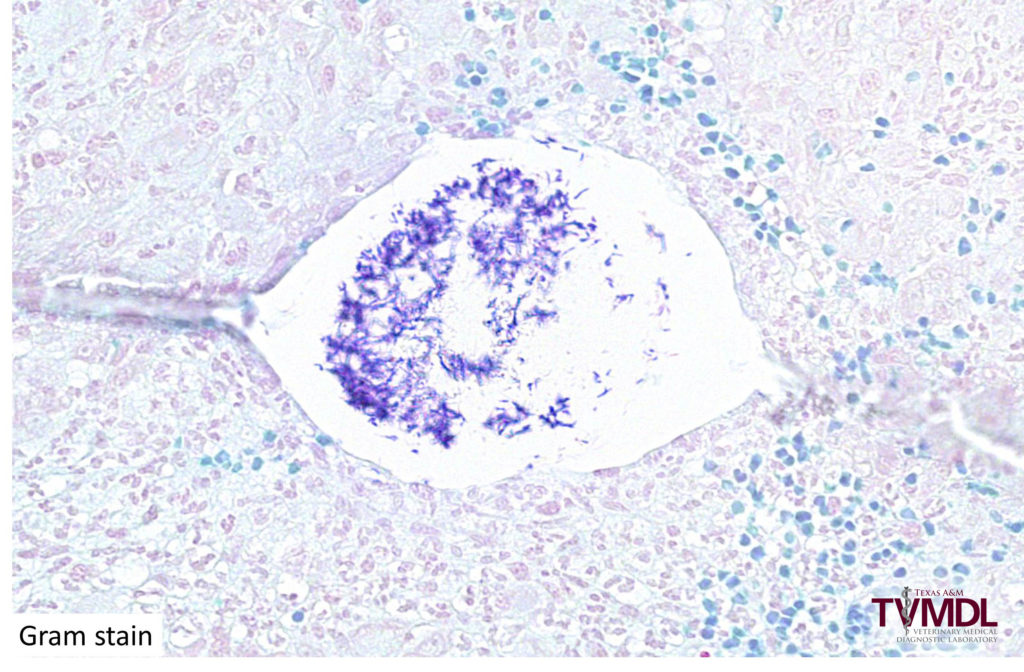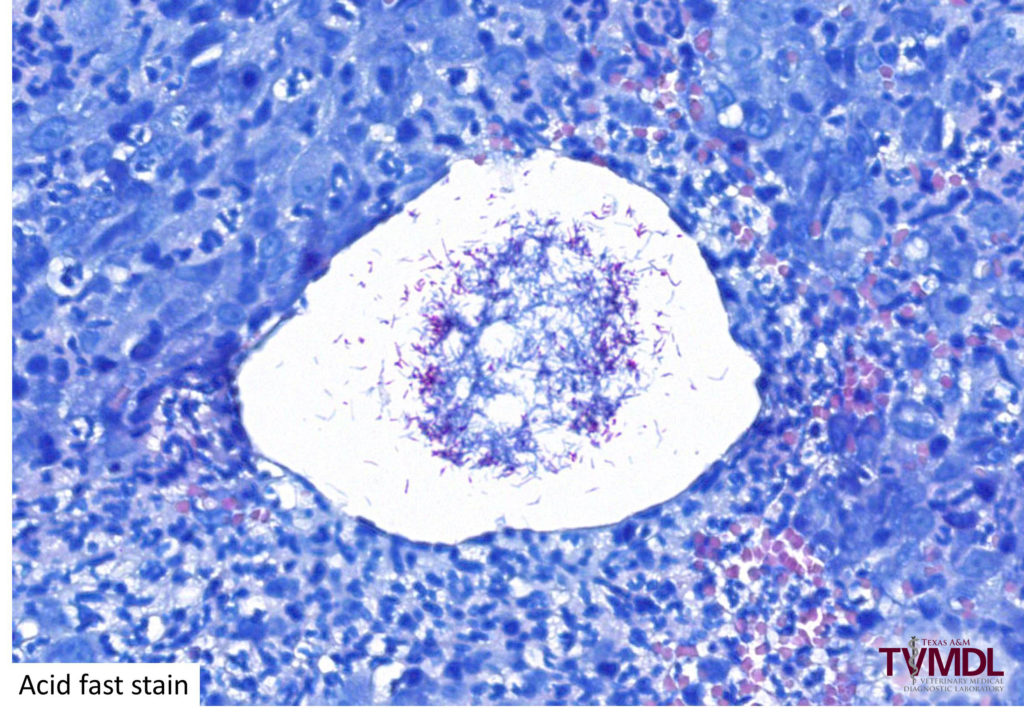Atypical Mycobacteriosis in a Cat
Erin Edwards, DVM, MS, DACVP
Skin samples from a 9-year-old Siamese cat were submitted to the Texas A&M Veterinary Medical Diagnostic Laboratory (TVMDL) in College Station. This cat was reported to clinically have a large, ulcerative lesion in the groin and on the back. Nearby areas were described to be alopecic and fissured. Two biopsy specimens were collected and submitted for histopathology.
Histologically there was severe pyogranulomatous inflammation within the dermis and subcutis. Scattered degenerative fat pockets, termed lipocysts, were present within this inflammation. With careful scrutiny, thin bacilli were occasionally found within these lipocysts. Special metachromatic stains were applied which highlighted these bacteria. The bacilli were strongly Gram-positive (Figure 1) and in some areas they stained with an acid fast stain (Figure 2). These histologic findings were supportive of feline atypical mycobacteriosis.
Atypical Mycobacteria spp. are also known as rapidly growing Mycobacteria spp. and non-tuberculoid Mycobacteria spp. They are found ubiquitously in the environment and infections are typically opportunistic, often following a cat bite or other trauma. Infections are uncommon in cats and are rare in dogs. Since the bacteria have a tropism for lipid-rich tissues, the inguinal fat pad is a classically affected site. Lesions can also be disseminated elsewhere in axillae, on the trunk, and rarely on the head and neck. Confirmation of infection can be achieved with bacterial culture.
Reference:
Gross TL, Ihrke PJ, Walder EJ, Affolter VK. Infectious nodular and diffuse granulomatous and pyogranulomatous diseases of the dermis. In: Skin Diseases of the Dog and Cat, 2nd ed. Ames, IA: Blackwell publishing, 2005. Pp. 283-287.

